No Trouble With the Curve: The Astros Have Built a World Series Run on Unforgettable Moments
From Alex Bregman’s throw, to José Altuve’s homer, to Lance McCullers’s historic curveball usage, Houston outlasted the Yankees in Game 7 of the ALCS thanks to the same kind of astonishing displays that have fueled its entire postseason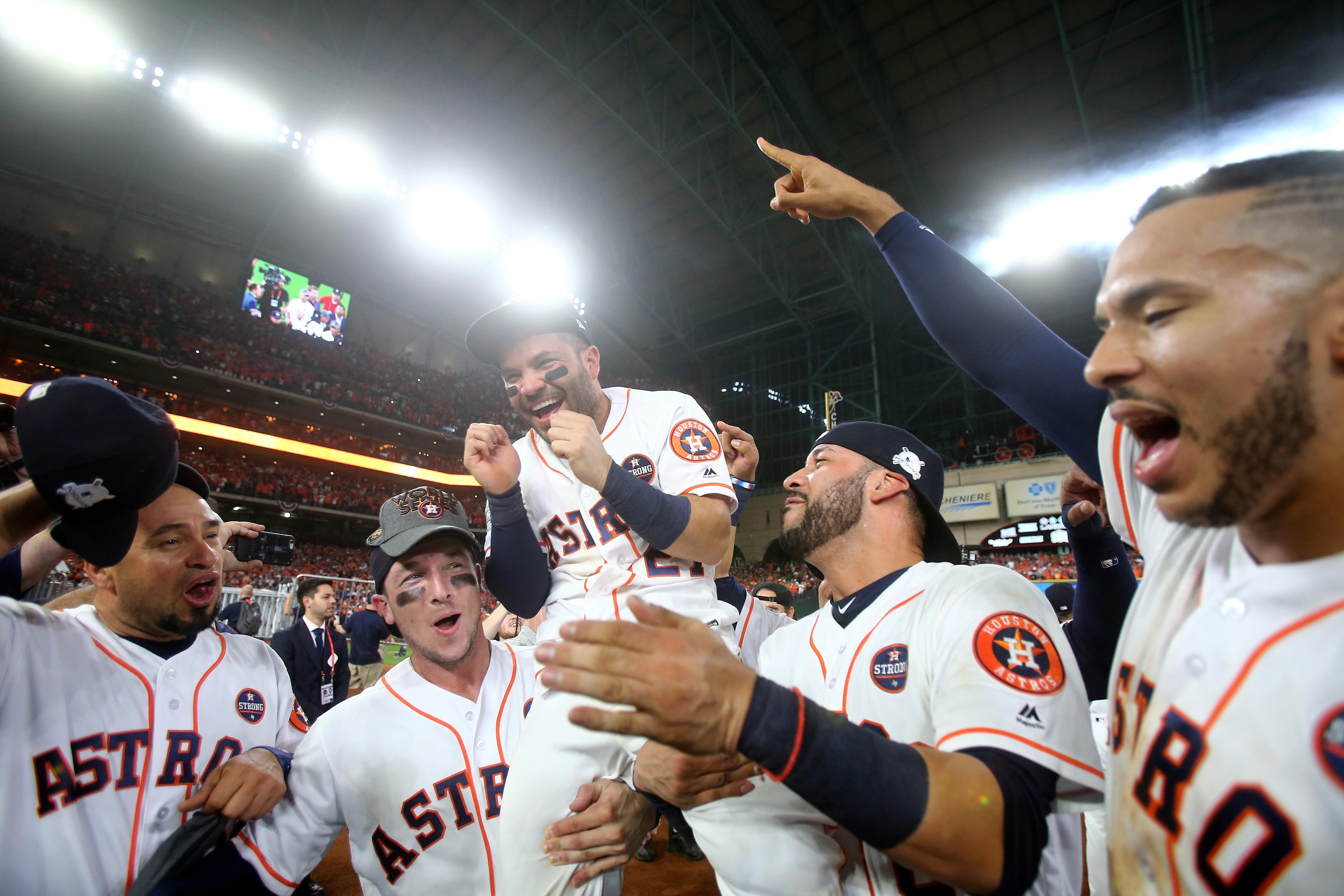
No one would have blamed Alex Bregman for flinging the ball to first instead of trying for a play at the plate. It was still early, only the top of the fifth: too soon to throw home at all costs, even in Game 7 of the ALCS. The Astros were already up by one run, and even if the Yankees’ runner on third, Greg Bird, tied the game, Houston would have time to retake the lead.

Yet when Todd Frazier bounced the ball to Bregman at third with one out and Yankees on the corners, Bregman didn’t hesitate or pursue the safe course. With Bird heading for home, Bregman fired the ball to catcher Brian McCann at the only speed and trajectory that could have threaded it through the 6-foot-4 Bird’s windmilling limbs and into McCann’s motionless glove in time to apply the tag. A little lower or a little slower, and the ball would have been late—or worse, deflected, allowing multiple runners to reach scoring position and potentially putting the Astros in an inescapable hole. But Bregman—who moved from shortstop to third in the middle of last season so that Houston could cram him into an infield whose left side was anchored by Carlos Correa—delivered a perfect feed, and the ball beat Bird’s foot, which seemed superglued to the glove as the two slid plateward together. Two outs, no runs, no replay review required.
It was the second time in the series that the Astros got ultra-aggressive on a play at the plate, and the second time that fortune favored them on what looked like a low-probability play. One week earlier, José Altuve scored the winning run in Game 2 on a send that might have seemed silly had Didi Gregorius not bounced the relay throw to Gary Sánchez, who couldn’t corral it even with a full second to spare. Throw in Bird getting cut down at the plate for the first time in a 2–1 win for the Astros in Game 1, and Yuli Gurriel sliding in safely on another short-hop home in Game 6, and home plate in Houston was a house of horrors for the Yankees in every ALCS game they played away from the fly-friendly Bronx.
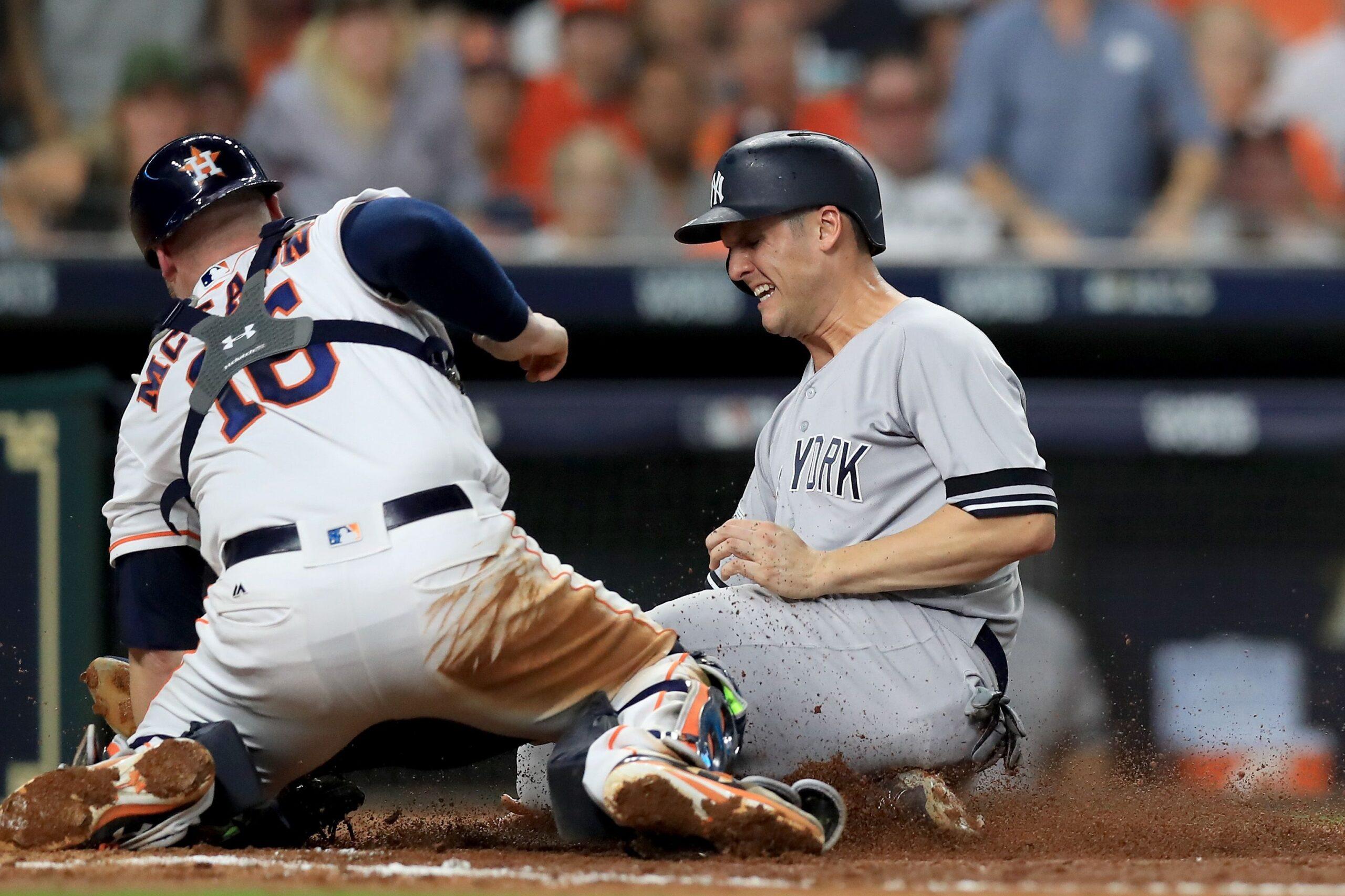
On Saturday, no Yankee crossed it. In a series that saw every home crowd go home happy, the Astros, who had home-field advantage, outlasted New York in the back-and-forth battle and beat the Yankees 4–0 in the series’ decisive game, earning a trip to the franchise’s second World Series.
Although the Astros’ aggressiveness produced some of the series’ signature plays, their discipline gave them the lead in Game 7. In Game 3, the Astros offered at too many of Yankees starter CC Sabathia’s soft sliders and cutters, chasing inside, outside, up, and down.
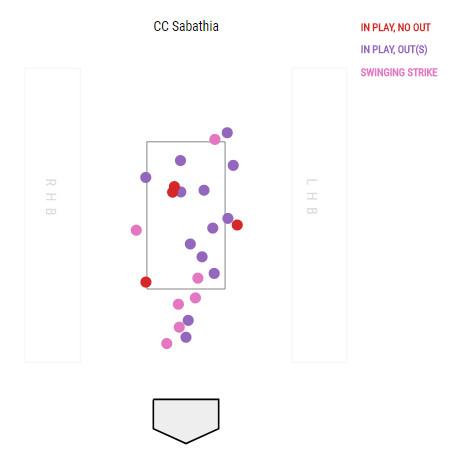
In Game 7, the Astros adjusted, and Sabathia’s strategy stopped working. Although the big lefty kept trying to expand the Houston hitters’ zones, they swung almost exclusively at strikes, forcing Sabathia to throw 65 pitches (and only 36 strikes) to record 10 outs. The only Astro who swung at a Sabathia pitch above the strike zone was DH Evan Gattis, just before he homered in the fourth for the only run scored off of Sabathia.
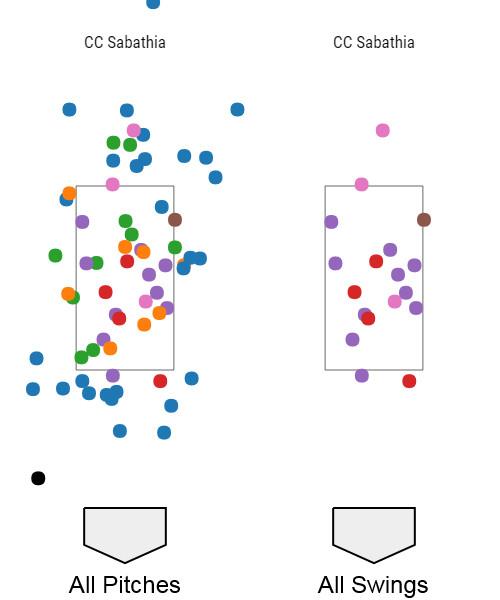
“He, if anybody, on our team, has been impacted by the changing of the roster for us,” Astros manager A.J. Hinch said about Gattis before the game. “His at-bats got taken away a little bit. He did go through an injury. A year ago he was putting up some significant numbers.” On Saturday, Gattis did something significant again. “If you’re CC, you tell yourself one run isn’t going to beat you,” Joe Buck intoned after Gattis’s ball bounced off the concrete above the yellow line in left, but Buck be damned, it did.
The Astros tacked on in the fifth with one of Altuve’s trademark optical-illusion homers—an opposite-field shot off a high-90-mph changeup—and again on a two-run double by Yankees discardMcCann, with all three insurance runs registered to Tommy Kahnle’s line. Every Astros hitter recorded at least one hit—appropriate for a team that regularly filled out a lineup with above-average batters from one through nine—and as has been customary throughout this home-run-happy month, half of the Astros’ runs scored on homers. But only the first one mattered, because Bregman’s throw ended the only real rally the Yankees could mount.
Astros starter Charlie Morton was as snakebitten as a pitcher can be in Game 3, when he allowed seven runs on hardly a hard-hit ball. In Game 7, the BABIP gods stopped spiting him. He and Lance McCullers—who entered in the sixth and threw 41 curveballs in 54 pitches—combined for nine innings of three-hit ball with two walks and 11 strikeouts, piggybacking like some Astros minor league starters did during the team’s bad old rebuilding days. This was the offensive mismatch that we saw in Games 1 and 2, before the series moved to New York and the script flipped: The Yankees whiffing away while the Astros (who struck out only four times) relentlessly put the bat on the ball. So nasty was Morton that Joe Girardi at one point protested that he’d been going to gum in his mouth, perhaps to impart some extra breaking-ball bite.
It wasn’t the gum giving him power. The Astros are among the clubs that have embraced the curveball’s benefits and recruited pitchers capable of spinning the pitch at extreme rates; Astros starters threw the third-highest percentage of curveballs of any team this season, and Astros pitchers led the majors by a big margin in curveball spin rate. Between the two of them, Morton and McCullers—two delicate arms whom many teams might not have trusted with postseason starts, or in Morton’s case, a multiyear contract—threw 65 curves in 108 pitches on Saturday, which was easily the highest-ever curveball usage rate (60.2 percent) in a single game. (According to Pitch Info data provided by David Appelman of FanGraphs, the highest previous single-game team curveball percentage in the pitch-tracking era was 52.5 percent, by the Dodgers on May 23, 2015, and no pitcher has ever relied on the curve as heavily in an outing of 50 or more pitches as McCullers did in Game 7.) And unlike the Astros, the Yankees were unable to resist swinging at those bending balls, especially with McCullers on the mound.
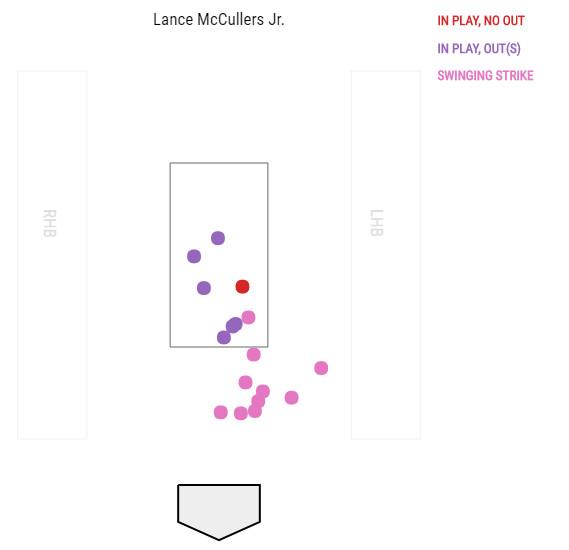
Before the game, Girardi downplayed the possibility of using a starter in relief of Sabathia, saying, “Because our bullpen has been really, really good, I've tried to use the exhaustible pen arms first before I go to a starter, because the bullpen guys are used to doing it.” In contrast to Girardi, Hinch outlined several scenarios involving starters in his pregame presser, even leaving open the possibility of using Justin Verlander the night after a 99-pitch start. As it turned out, Hinch won a pennant without calling on a regular reliever in Game 7. Although his newfound allergy to relievers makes sense in light of his pen’s 5.93 ALCS ERA prior to Game 7—8.38 excluding starter Collin McHugh’s Game 3 garbage-time innings—it leaves the Astros in an uncertain position as they enter another series in which Hinch eventually will have to trust pitchers he very publicly negged to get there. But in a do-or-die game, both players and managers go with what’s working, even if that means riding one pitch type or one pitcher type to an extraordinary degree.
The only Game 7 highlight on the Yankees’ side came courtesy of Aaron Judge, whose height helped him rob a home run in a then-scoreless game for the second time this October. The seat-seeking liner he caught, clobbered by Gurriel, was almost identical to the Correa homer that had eluded his glove in Game 2; this time, Judge was standing just slightly closer to the line, and the ball was hit one degree lower and two feet shorter, which made the difference.
At the time, that perfect placement seemed like a sign that Game 7 might go the Yankees’ way, but this was a series that taught us not to trust signs and so-called swings in momentum. The ALCS was a week-plus of indelible images, of heart-rending endings, of faith betrayed and rewarded, of unforgettable games by the sport’s biggest and (physically) smallest stars. The Astros, who succeeded in largely luck-based one-run games all regular season (19–13), took two such games from the Yankees, who struggled in those contests (18-26) and lost despite outscoring the Astros in the series, 22–20. “This series, as unique as it was, it wasn't over after two—I said that,” Hinch told reporters postgame. “It wasn’t over after five—I said that. It's now over after seven—I'm really happy. I don't want a Game 8.”
This young Yankees unit has many wins and playoff appearances ahead of it, with or without Girardi, whose contract is up. But that’s a future for non–New Yorkers to fear on another day. First, there's a chance to tip our caps to the once-doubted and dismal Astros, whose pennant-sealing win was the product of savvy, stat-driven free-agent signings, of first-round draftees who followed losing seasons, and of scouting and player-development triumphs who predated the teardown. And then there’s the enticing prospect of another tight series to come in the first fall classic tussle between 100-win teams since 1970: Justin Verlander vs. Clayton Kershaw, Correa vs. Corey Seager, and one team that hasn’t won a World Series for almost three decades taking on another that never has.

